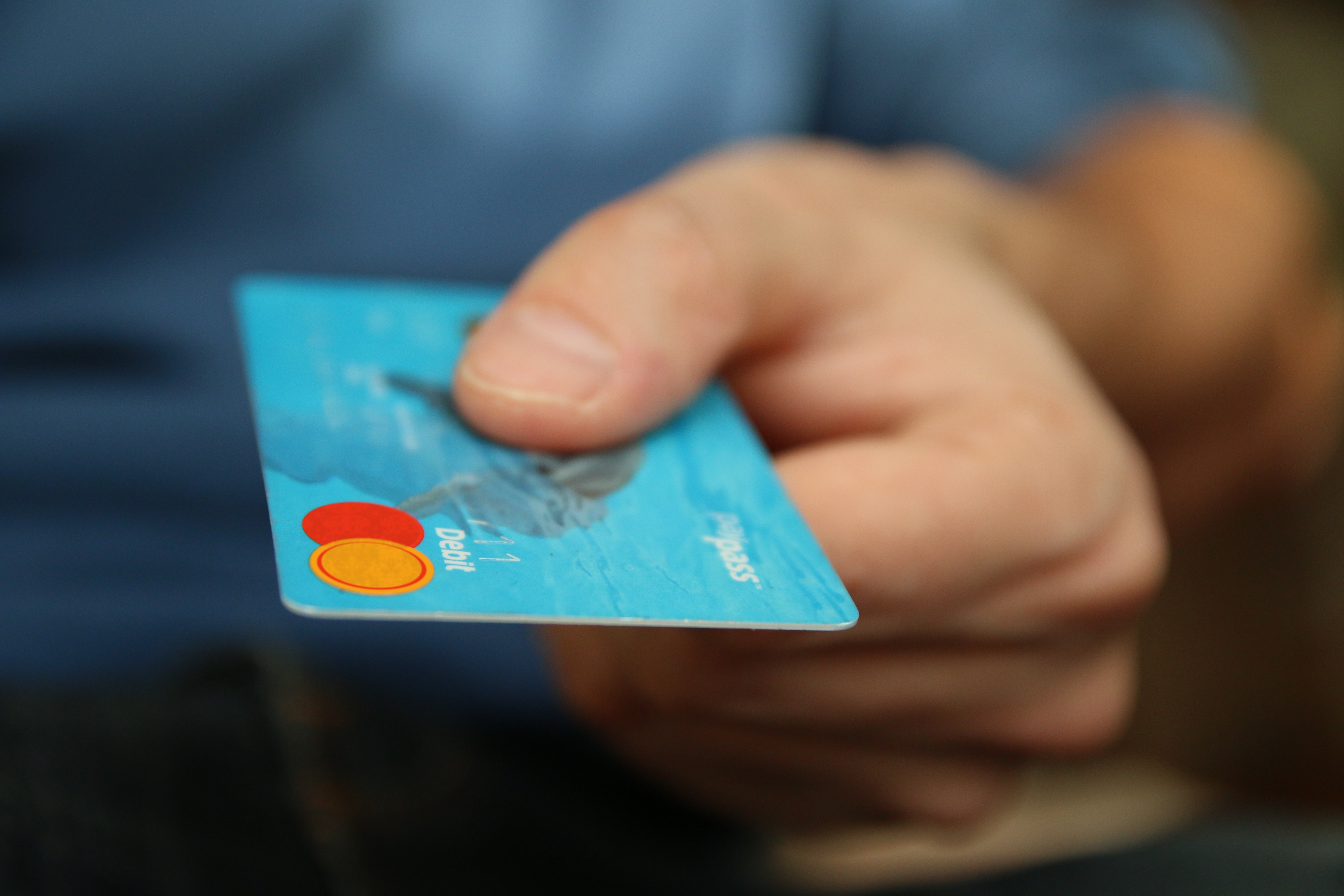Plastic money, such as credit and debit cards, has transformed the way we handle transactions. While it offers convenience, rewards, and enhanced security, it also introduces risks, such as overspending and hidden fees.
Plastic money refers to payment cards—such as credit cards, debit cards, prepaid cards, and store cards—that enable cashless transactions.
These cards are typically made of plastic or PVC and store financial or identification data that enables secure, electronic payments.
Understanding the pros and cons of plastic money ensures you make smarter financial decisions. When used poorly, it mostly means you’ll end up in debt.
Here are some things to keep in mind before using plastic money.
In this article:
- How Plastic Money Works (Simple Overview)
- Top 4 Advantages of Using Plastic Money
- When Plastic Money Works Best (Real-Life Examples)
- 3 Cons of Using Plastic Money
- Common Misunderstandings About Plastic Money
- Why Plastic Money Became So Popular
- Plastic Money vs. Cash: Key Differences
- Is Plastic Money Safe? Security Considerations
- Tips for Using Plastic Money Responsibly
- Future of Plastic Money: Will It Replace Cash?
- Alternatives to Plastic Money: Credit-Free Payment Options
- Tips for Reducing Your Credit Card Debt
What is Plastic Money, and How Does It Work?
Plastic money is any card that can be used as a substitute for cash.
The most common type of plastic money is a credit card, but debit cards, gift cards, and store cards are also considered plastic money.
When you use a credit card, you borrow money from the bank that issued the card. You will then have to pay back the money you borrowed to make credit card payments, plus interest and fees.
Debit cards work differently. When you use a debit card, the money is taken directly from your bank account.
Types of Plastic Money (With Examples)
Plastic money comes in different forms depending on how it’s used and where the money comes from.
1. Credit Cards
Borrow money up to a limit and pay it back later.
Example: Making a purchase today and paying it off next month.
2. Debit Cards
Money is taken directly from your bank account.
Example: Paying for groceries using your checking account balance.
3. Prepaid Cards
You load money onto the card before using it.
Example: Travel cards, gift cards, and reloadable spending cards.
4. Store Cards or Loyalty Cards
Cards issued by specific brands, often offering rewards or discounts.
Example: Retail store credit cards tied to a loyalty program.
How Plastic Money Works (Simple Overview)
Regardless of the card type, the process is similar:
- You swipe, tap, or enter card details online.
- The card information is securely sent to your bank or card network.
- The payment is approved or declined.
- The transaction is recorded instantly — no cash handling needed.
This smooth, fast process is the main reason plastic money became the preferred payment method for millions of people worldwide.
Top 4 Advantages of Using Plastic Money
If you are wondering why you should trade those bills for a piece of plastic, read on.
- Convenience
- Rewards and Cashback
- Security
- Helps build your credit score
Let's look more deeply into each of these advantages.
1. Convenience: Fast and Cash-Free Transactions
Plastic money eliminates the need to carry cash, making transactions quick and seamless, whether in stores or online.
Credit and debit cards also allow access to global markets without the hassle of currency exchange.
Lastly, you can use your card to make purchases anywhere. Visa and Mastercard are accepted worldwide, reducing the stress of finding currency exchanges while traveling.
2. Rewards and Cashback: Benefits of Credit Cards
Companies often offer rewards to entice customers to use their cards. These perks may include travel miles, points, cashback, or discounts.
- Travel rewards help you save on airfare, hotels, and rental cars.
- Cashback is another popular reward that returns a percentage of your spending. Some cards also serve the needs of foreigners, offering perks like no foreign transaction fees.
- Points can be redeemed for merchandise, gift cards, or transferred to airline and hotel programs.
Source: Pexels
3. Security: Fraud Prevention Features with Plastic Money
Credit cards are much safer than cash. They are harder to lose and offer fraud protection.
If your card is stolen, you can report it, dispute charges, and reverse unauthorized transactions. Cash offers no such protection—once it’s gone, it’s gone.
4. Cards Can Help You Build Credit
Credit cards aren’t only for people with good credit. When used responsibly, they can help improve your credit score.
Payment history is one of the most important credit-scoring factors. Paying bills on time shows lenders you are financially responsible.
Source: Pexels
When Plastic Money Works Best (Real-Life Examples)
Cards aren’t just convenient — they shine in situations where cash isn’t practical.
- Online shopping
- Traveling abroad without carrying large amounts of currency
- Recurring payments like subscriptions or utility bills
- Urgent purchases when you don’t have cash on hand
- Tracking business expenses through monthly statements
3 Cons of Using Plastic Money
As with most things, there are drawbacks to using plastic money.
1. Overspending: A Major Plastic Money Risk
One of the biggest dangers of credit cards is spending more than you can afford.
With cash, your limit is whatever is in your wallet—and you can’t exceed it.
2. Credit Card Debt
If you don’t pay your balance in full each month, interest accumulates quickly.
U.S. credit card debt has reached $1.14 trillion, and average APRs have nearly doubled from 2013 to 2023, making repayment harder than ever.
Source: Pexels
3. High Fees and Interest Rates
Credit cards often include hidden costs:
- Annual fees
- Late payment fees
- Cash-advance fees (often ~3% of the amount withdrawn)
Being aware of these fees helps you avoid unnecessary expenses.
Common Misunderstandings About Plastic Money
Plastic money often gets misunderstood. Here are a few things people get wrong:
“Credit cards always cause debt.”
Debt happens only when balances aren’t paid. Used responsibly, credit cards offer protection and rewards.
“Card payments aren’t secure.”
Most cards use encryption, fraud monitoring, and zero-liability policies.
“Debit cards and credit cards work the same way.”
Debit pulls from your bank account instantly; credit allows you to borrow temporarily.
“Prepaid cards are only for people without bank accounts.”
They’re also used for budgeting, travel, and controlled spending.
Why Plastic Money Became So Popular
Plastic money offers a blend of convenience, speed, and safety that cash struggles to match. Here’s why many people prefer it:
- Less cash handling means fewer losses and less risk of theft
- Online purchases require card payments
- Rewards and cashback incentivize card use
- Better tracking of spending through statements
- Worldwide acceptance while traveling
Plastic Money vs. Cash: Key Differences
| Feature | Plastic Money | Cash |
|---|---|---|
| Security | Can be locked or replaced if lost; fraud protection available | Lost cash is gone forever |
| Convenience | Works for online and in-person payments | Only works in person |
| Spending Control | Easy to track transactions; budgeting tools available | Harder to track manually |
| Costs | May include fees, interest, or charges | No fees to use |
| Acceptance | Accepted globally | Limited to physical locations |
Is Plastic Money Safe? Security Considerations
Plastic money is generally safe due to encryption, fraud monitoring, and PIN/OTP authentication. However, it still carries risks:
- Card skimming
- Phishing scams
- Unauthorized online transactions
- Data breaches
How to Stay Safe
- Enable two-factor authentication
- Use virtual cards for online purchases
- Set spending and transaction alerts
- Avoid using cards on public Wi-Fi networks
Tips for Using Plastic Money Responsibly
If you decide to use credit cards, here are four foolproof habits to avoid debt:
- Charge only what you can afford: Pay your balance in full every month.
- Stay within limits: Avoid maxing out your credit line.
- Pay on time: Set reminders for due dates.
- Track your spending: Monitor usage to stay on budget.
These habits help you enjoy the benefits of plastic money without falling into financial trouble.

Source: Freepik
Future of Plastic Money: Will It Replace Cash?
Card payments continue to rise globally.
As digital wallets and tap-to-pay options expand, plastic money is expected to remain a dominant payment method—serving as a bridge between cash and fully digital payments.
Alternatives to Plastic Money: Credit-Free Payment Options
If you’re concerned about debt, several alternatives offer the same convenience without the risks.
- Debit Cards: Spend only what’s available in your checking account.
- Prepaid Cards: Load with cash to prevent overspending.
- Cash Payments: Full budget control with no interest or hidden fees.
Tips for Reducing Your Credit Card Debt
If you already have credit card debt, don’t panic. There are several things you can do to get out of it.
Credit counseling services such as the NFCC can negotiate on your behalf.
In some cases, you may even need to ask for money from family or friends. Focus on paying off the highest-interest card first and avoid new charges until balances are under control.
Building up Your Overall Financial Health
Long-term financial health comes from responsible spending habits and developing passive income.
Small mindset shifts can lead to big financial improvements and long-term stability.
Source: Pexels
FAQ
1. What is plastic money?
Plastic money refers to physical cards—credit, debit, or prepaid—used for cashless transactions.
2. What are the pros and cons of plastic money?
Pros include convenience and rewards. Cons involve fees, debt risks, and overspending.
3. How does plastic money compare to digital wallets?
Plastic cards work offline; digital wallets require an internet connection.
4. Is plastic money safe?
Yes, it includes PINs, fraud alerts, and dispute protections.
5. Can plastic money help build credit?
Responsible use can improve credit scores.
6. What are alternatives to plastic money?
Digital wallets, mobile payments, and cryptocurrencies.
Conclusion: Should You Rely on Plastic Money?
Plastic money is ideal for people who value convenience, security features, and digital tracking of expenses.
However, individuals who struggle with budgeting or credit management may face challenges such as overspending or accumulating debt.
A balanced approach—using cards responsibly while limiting high-interest borrowing—offers the best outcome.

Author Bio
Igor is a Co-Founder of Fortunly.com, a company that makes finance approachable through reviews, news, and market analysis. Their team is dedicated to explaining financial topics, simplifying terminology, and breaking down complex processes.

